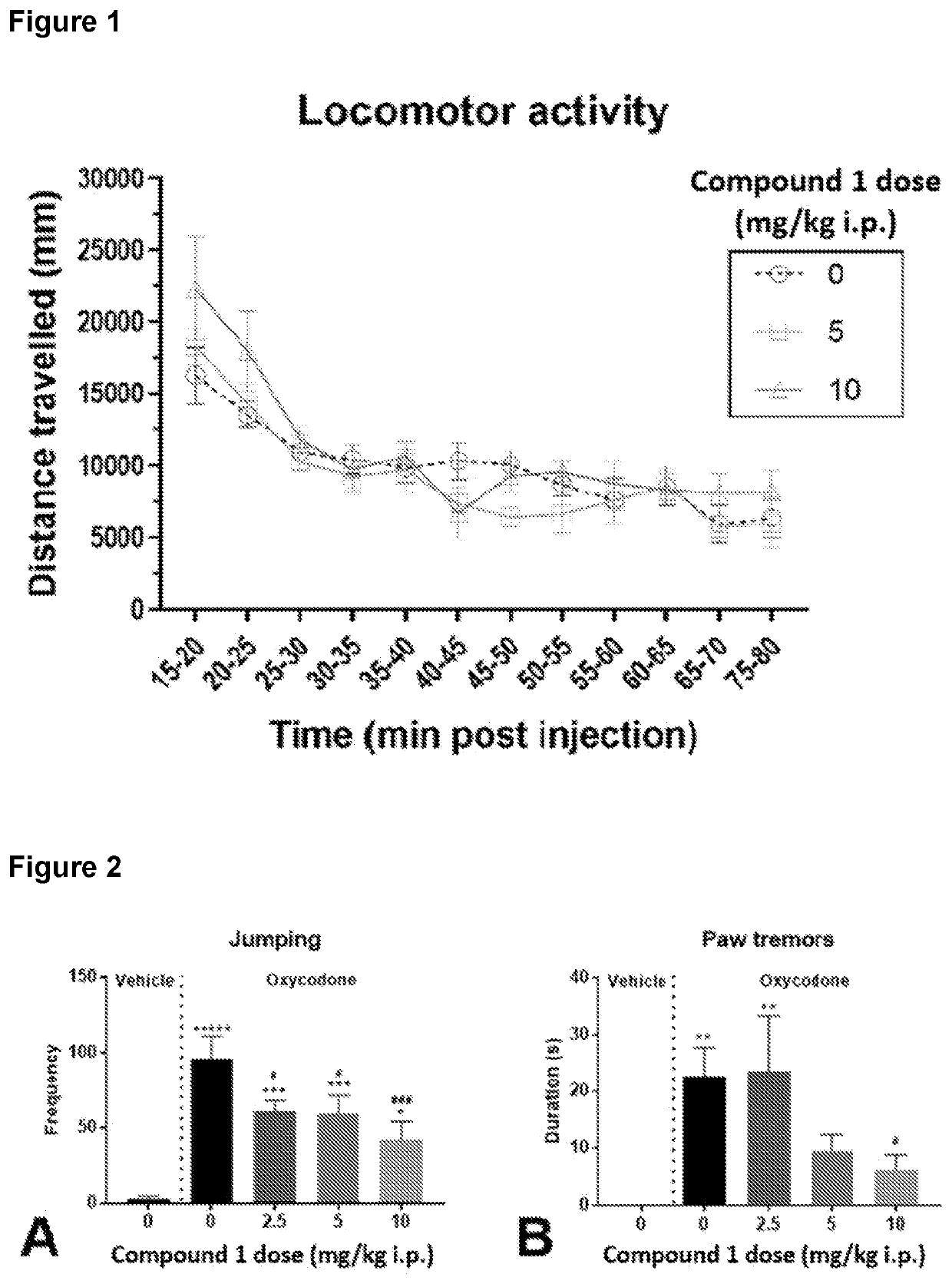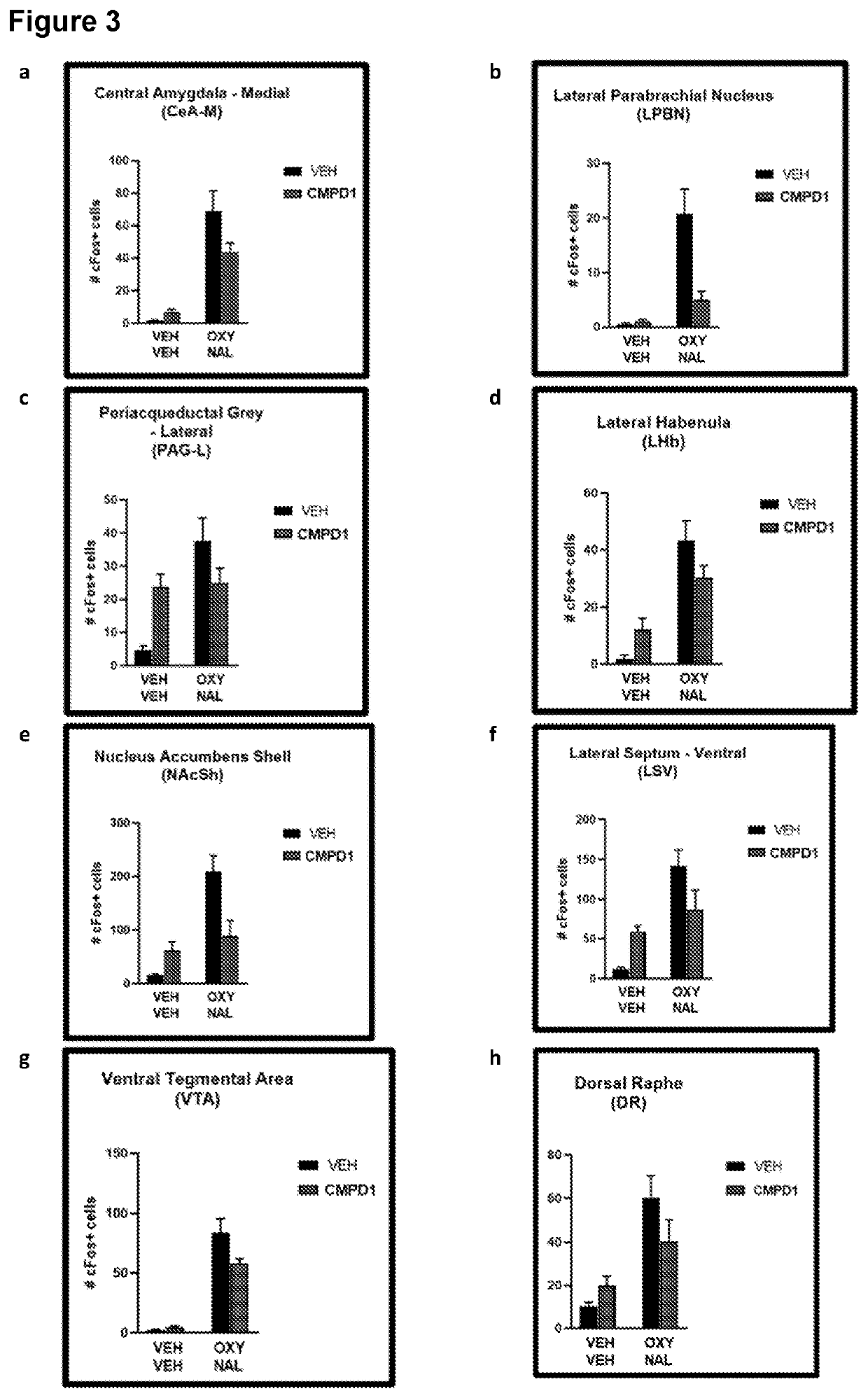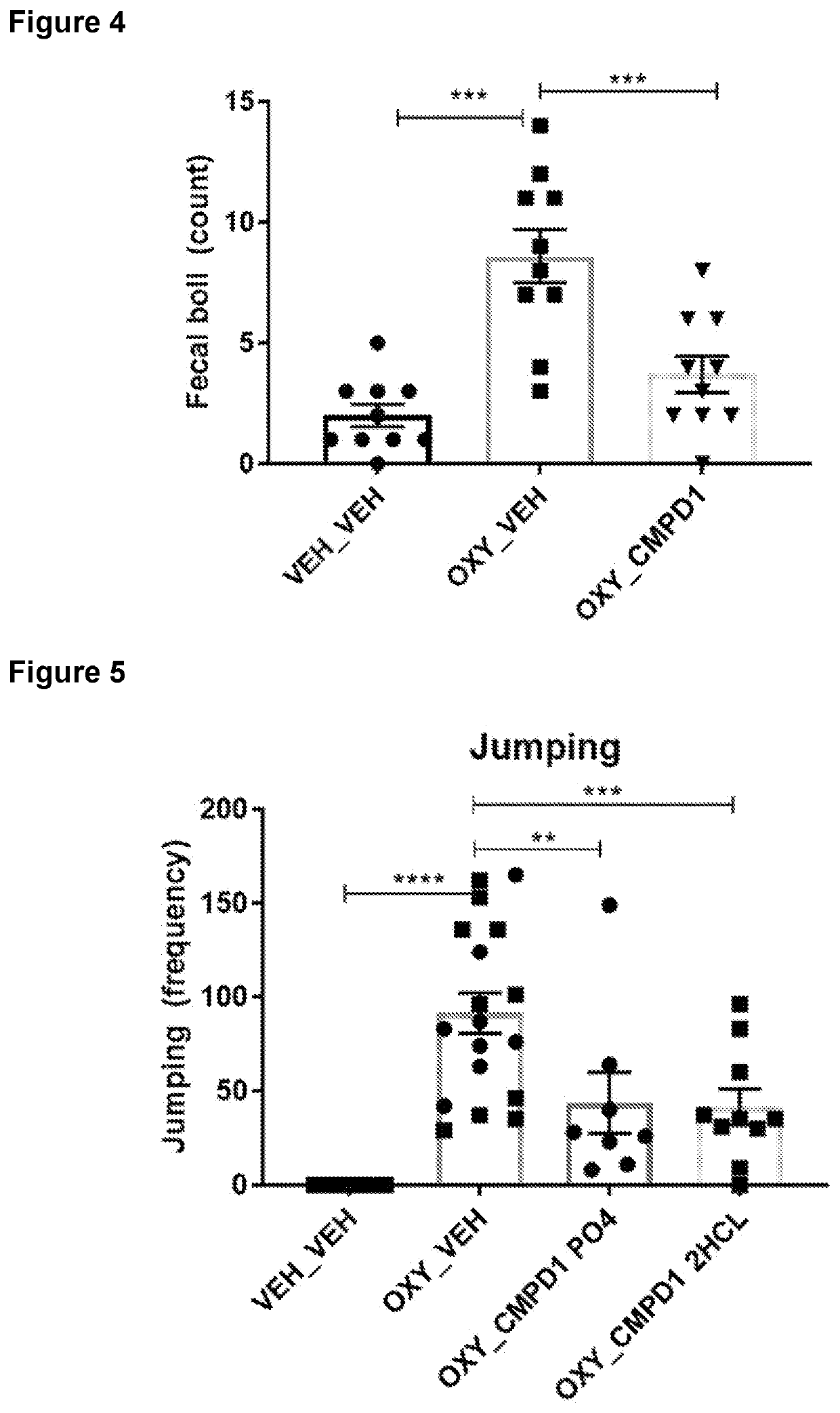Treatment of Opioid Withdrawal
a technology for treating and/or preventing opioid withdrawal, applied in the direction of nervous disorders, drug compositions, organic chemistry, etc., can solve the problems of opioid withdrawal, significant pain, physical and psychological distress of sufferers, and increase the risk of treatment-related adverse events and opioid misus
- Summary
- Abstract
- Description
- Claims
- Application Information
AI Technical Summary
Benefits of technology
Problems solved by technology
Method used
Image
Examples
example 1
[0252]This Example describes experiments in a C57BL / 6 mouse model of opioid withdrawal (naloxone precipitated withdrawal following oxycodone administration) and the potential of a compound of the invention to treat withdrawal symptoms.
AbbreviationDefinitioni.p.IntraperitonealCMPD1CMPD1-2HCLOXCDOxycodoneOXCDMice in the oxycodone condition treated with vehicle i.p.0CMPD1OXCDMice in the oxycodone condition treated 10 mg / kg CMPD1-10CMPD12HCL i.p.OXCDMice in the oxycodone condition treated 2.5 mg / kg CMPD1-2.5CMPD12HCL i.p.OXCDMice in the oxycodone condition treated 5 mg / kg CMPD1-5CMPD12HCL i.p.OXCDVEHMice in the oxycodone condition treated with vehicle i.p.VEHVehicleVEHMice in the vehicle condition treated with vehicle i.p.0CMPD1VEHVEHMice in the vehicle condition treated with vehicle i.p.
[0253]Drugs
[0254]All drugs used in this study were dissolved in physiological saline and administered at a volume of 10 ml / kg.
experiment 1.1
CMPD1-2HCL on Locomotor Activity in an Open Field Test
[0255]The purpose of this experiment was to demonstrate that CMPD1-2HCL at doses of 5 and 10 mg / kg does not cause potentially confounding effects on locomotor activity. N=18 adult male C57BL / 6 mice received either 0, 5 or 10 mg / kg CMPD1-2HCL (i.p.; n=6 per condition). Fifteen minutes after receiving their i.p. injection of CMPD1-2HCL mice were placed individually into a novel 40 (l)×40 (w)×40 (h) cm locomotor testing arena. Sessions were captured by overhead cameras and videos were analysed by using the automated behaviour tracking software CleverSys Topscan (CleverSys, Virginia, USA), which provided the distance travelled by each mouse in each 5 min time bin over the 60 minute locomotor testing session. Data were analysed by SPSS using mixed model ANOVA.
Results of this experiment are shown in Tables 1-3 and FIG. 1.
TABLE 1Distance (mm) travelled during each time bin for each mouse following 0mg / kg treatment with CMPD1-2HCL (resul...
experiment 1.2
Effects of CMPD1-2HCL on Naloxone Precipitated Oxycodone Withdrawal
[0257]Adult male C57BL / 6 mice (N=40) were allocated to one of five conditions (n=8 per condition):
[0258](1) Vehicle, 0 mg / kg CMPD1-2HCL;
[0259](2) oxycodone, 0 mg / kg CMPD1-2HCL;
[0260](3) oxycodone, 2.5 mg / kg CMPD1-2HCL;
[0261](4) oxycodone, 5 mg / kg CMPD1-2HCL; or
[0262](5) oxycodone, 10 mg / kg CMPD1-2HCL.
[0263]Mice in the oxycodone conditions received i.p. injections of oxycodone for 5 days according to the schedule and doses set out in Table 1. The morning and afternoon doses were separated by 7 h. Mice in the vehicle condition received injections of vehicle saline instead of oxycodone. One-hour-and-forty-five minutes after the morning injection on day 5, mice were administered their i.p. dose of CMPD1-2HCL. Fifteen minutes later they received an i.p. injection of 10 mg / kg naloxone (oxycodone groups) or saline (vehicle group), and proceeded immediately to testing.
TABLE 4Oxycodone dosing schedule for mice in the oxycodon...
PUM
| Property | Measurement | Unit |
|---|---|---|
| pharmaceutical composition | aaaaa | aaaaa |
| opioid use disorder | aaaaa | aaaaa |
| time | aaaaa | aaaaa |
Abstract
Description
Claims
Application Information
 Login to View More
Login to View More - R&D
- Intellectual Property
- Life Sciences
- Materials
- Tech Scout
- Unparalleled Data Quality
- Higher Quality Content
- 60% Fewer Hallucinations
Browse by: Latest US Patents, China's latest patents, Technical Efficacy Thesaurus, Application Domain, Technology Topic, Popular Technical Reports.
© 2025 PatSnap. All rights reserved.Legal|Privacy policy|Modern Slavery Act Transparency Statement|Sitemap|About US| Contact US: help@patsnap.com



